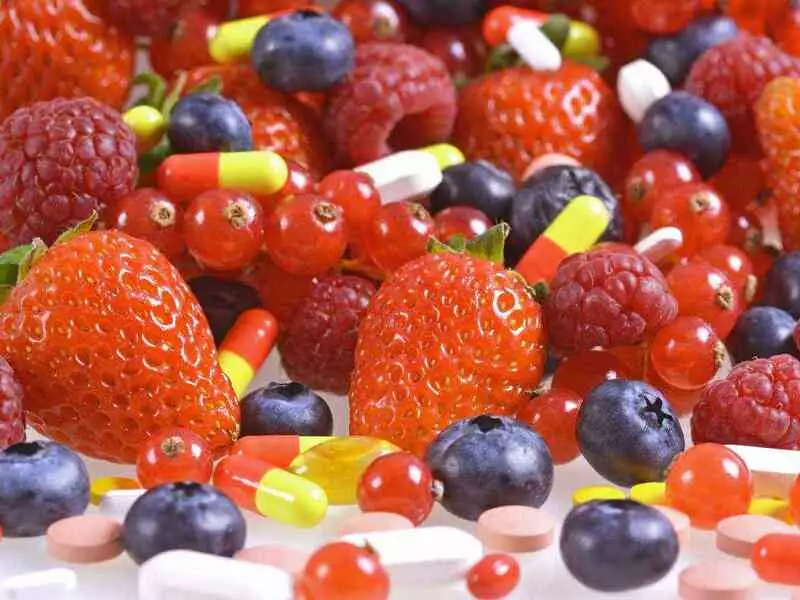A child's diet should be balanced and contain all the recommended products from the food pyramid to give the child the opportunity for safe growth and development. According to research, the diet of children in Poland is poor in a group of products that are of great importance in the diet - vegetables and fruit. The avoidance of fruit and vegetables is sometimes the result of parents' ignorance in this area, and this is where paediatricians play a major role; on the other hand, children's reluctance to eat these products is also a significant problem. Fruit juices can help in this situation.
Vegetables and fruit in a child's diet
In 2016, the Institute of Food and Nutrition developed a new Pyramid of Correct Nutrition and Physical Activity, where the key role in nutrition of fruit and vegetables was highlighted. It is this food group that has been identified as the basis of the daily ration.
Unfortunately, reality deviates from this pattern, because with regard to children, there is selective eating of these products and, what is more, an aversion to selected groups of products from this range. How do we get out of this seemingly deadlocked situation? Fruit juice can be an alternative. According to the World Health Organisation (WHO), a glass of juice (approximately 200 ml) is able to replace one of the five recommended daily portions of fruit or vegetables, and for children this portion is 150 ml. So when a child expresses reluctance to eat fruit or vegetables, it is advisable, in consultation with a specialist doctor or dietician, to include appropriate portions of fruit juice in the diet.
Vitamin C
A very important element in children's nutrition is undoubtedly vitamin C - ascorbic acid, which plays a key role in the proper functioning and development of the body. It is a vitamin that is commonly found in fruit and vegetables. To illustrate - a glass of pasteurised orange juice is able to provide a child with 100% of the daily requirement of this particular vitamin (assuming an average RDA standard for children of 55 mg/day). This explains why in the United States, or in Scandinavian countries, it is common practice to have a glass of orange juice with breakfast.
 photo: panthermedia
photo: panthermedia
Vitamin C also shortens the duration of an infection, and increases the absorption of iron, the supply of which is used up during inflammation. This is extremely valuable information for parents, especially in autumn and winter, or for children who are starting at nursery or kindergarten. Juices are therefore just as valuable as the fruit from which they are made, but they are hypertonic liquids, meaning that the water they contain is absorbed into the body slowly and evenly while providing nutrients, vitamins, micro- and macroelements, phytonutrients with antioxidant properties. Therefore, do not forget to include an adequate amount of water in the child's diet.
Media messages
We have probably all become aware of the power of the media on more than one occasion. The image they create about juices focuses on the fact that this dietary element, as one among many, is responsible for the development of obesity in children. Scientific statements, however, say otherwise. One study based on National Health &Nutrition Examination Survey (NHTN NES) data, involving 3,618 children, found no correlation between consumption of the recommended amounts of 100% fruit juice and obesity in children. An additional conclusion drawn from the study, is that a higher intake of fruit and vegetables, which generally have a low energy density, can reduce the intake of high-energy foods and influence the formation of good eating habits. Fruit juice gives the body the same substances as the fruit from which it is made, while being an equally valuable source of valuable substances, but also of energy in the form of monosaccharides, which is why it is used for drinking as part of a rational diet and not to quench thirst.
Calorific value of juices
A glass of fruit juice represents, depending on the type of fruit, between 2% and 5% of the kcal recommended for daily consumption. From a legal point of view, it is worth mentioning Directive 2012/12/EC of the European Parliament and of the Council of 19 April 2012, which applies to fruit juices, and the Regulation of the Minister of Agriculture and Rural Development of 8 February 2013. (Journal of Laws 2013 item 327). According to these documents, the addition of sugars as well as other sweeteners to fruit juices is prohibited. The presence of sugar in juices is due to its occurrence in its natural form in the fruit from which they are extracted. Oranges are a case in point - 100 g of orange is approximately 45 kcal, and 100 ml of orange juice is also approximately 45 kcal. Furthermore, according to the letter of the law, wherever you find the word 'juice' on the packaging, it is also forbidden to add any artificial substances (e.g. preservatives, artificial flavours)." [1]









